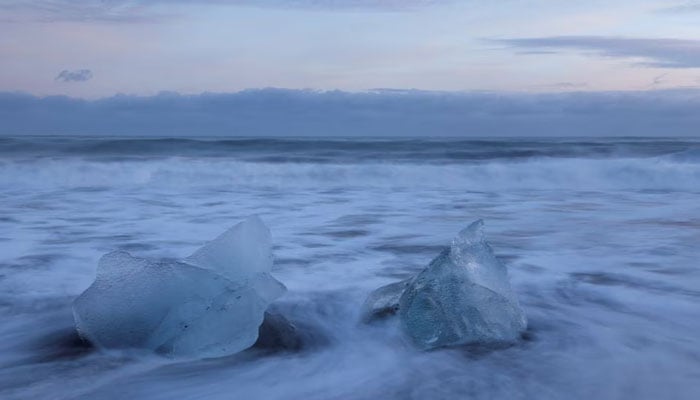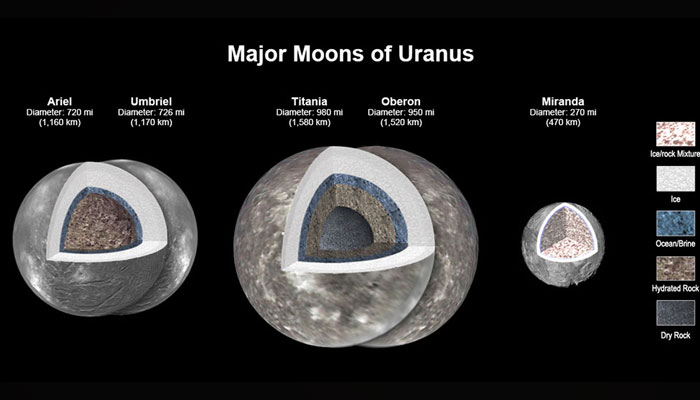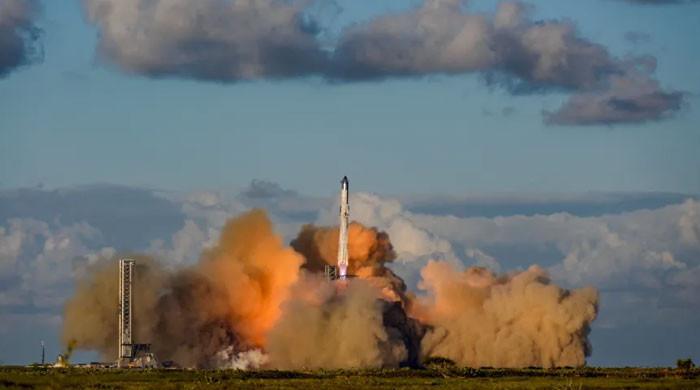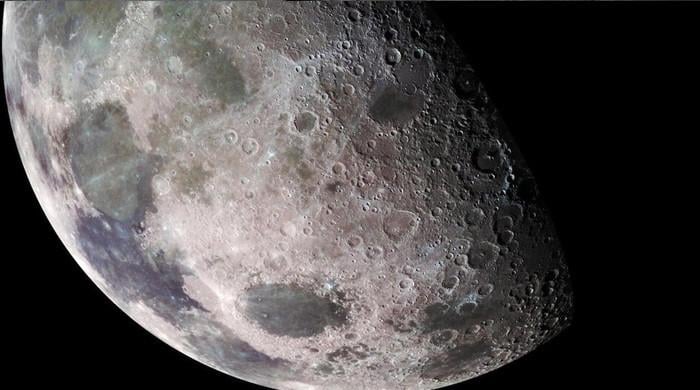Habitability hoped as 4 Uranus moons may have oceans under icy crusts
Scientists believe that new findings can also help design supporting hardware for future probes
May 06, 2023

A new study has concluded in its observation that an ocean may lie beneath the surfaces of the four icy moons. Uranus has 27 moons circling in its orbit.
The study from Nasa’s Jet Propulsion Laboratory is the first to detail the evolution of the interior makeup and structure of all five large moons: Ariel, Umbriel, Titania, Oberon, and Miranda, said Nasa in its news release.
The research was published in the Journal of Geophysical Research: Planets.
With the help of new computer modelling, according to Nasa, Data from the US-based space agency's Voyager 2 spacecraft — launched in 1977 — was revisited.
Scientists have believed for long that Titania with its huge size, could likely be able to keep its internal heat to prevent its internal ocean from freezing.

The other moons had previously been widely considered too small to retain the heat necessary to keep an internal ocean from freezing, especially because heating created by the gravitational pull of Uranus is only a minor heat source, noted Nasa.
Co-author of the study Julie Castillo-Rogez stated: “When it comes to small bodies – dwarf planets and moons – planetary scientists previously have found evidence of oceans in several unlikely places, including the dwarf planets Ceres and Pluto, and Saturn's moon Mimas."
She went on to say that "…there are mechanisms at play that we don’t fully understand. This paper investigates what those could be and how they are relevant to the many bodies in the solar system that could be rich in water but have limited internal heat."
Researchers also found the potential sources of heat in the moons' rocky mantles that release hot liquid which could help an ocean maintain a warm temperature.
Scientists said: "This is especially likely for Titania and Oberon, where the oceans may even be warm enough to potentially support habitability, said the release."
Nasa said: "A key finding in the study suggests that chlorides, as well as ammonia, are likely abundant in the oceans of the icy giant’s largest moons. Ammonia has been long known to act as antifreeze. In addition, the modelling suggests that salts likely present in the water would be another source of antifreeze, maintaining the bodies’ internal oceans."
Dr Castillo-Rogez said: "We need to develop new models for different assumptions on the origin of the moons in order to guide planning for future observations."
Scientists believe that new findings can also help design supporting hardware for future probes that can be used to look for liquid water in the deep interiors of these moons.












